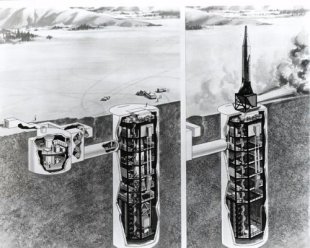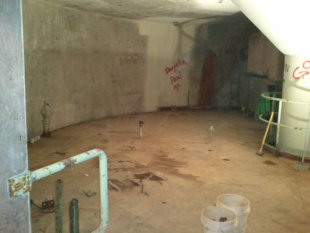
A certain segment of the population likes to be prepared for the worst, and for many doomsday scenarios, decommissioned underground nuclear missile silos are the ultimate hideout.
Despite this, there are government-constructed nuke-proof bunkers, some of the strongest structures made by man, that have lingered on the market without selling, and their prices have been slashed.
One bunker that CNBC has written about has had its price slashed from $4.6 million to $750,000.
Interested in more? A website called Missile Bases has numerous others listed for sale as well. Truth be told, some of these sale-priced bunkers are fixer-uppers. But on the plus side, once all the basics are set up and supplies are stockpiled, if you ever do need to escape disaster, there will be plenty of time to work on home improvements in your bunker.
For the negotiable price of $399,000, you can also buy an Atlas F missile base (like the one illustrated at the top) in central Kansas on eBay. “Negotiable” is not to say owner Jeff Flaningam will sell at clearance-rack prices. There are currently four declined offers on the listing, but Flaningam indicated he may consider a partial trade of a yacht plus cash.
Let’s take a look at Flaningam’s decommissioned Atlas F silo.
Jeff Flaningam, the 37-year-old co-owner of Veritas Forge, a small product development company, bought this silo about three years ago. He was intrigued by decommissioned nuclear missile sites for years and says they’re like having the world's toughest fort. He is the third owner of this site since the Air Force moved out.
“Most of these sites were decommissioned between 1962 and 65. From that point on, some of them sat before they were salvaged out,” Flaningam says, adding that most of the first owners of these silos were salvagers who were after the steel, copper wiring, and other materials. Flaningam’s silo was first purchased around 1970, he says.
Since taking ownership, he has spent a lot of time visiting working on the demolition of structural features as well as pumping out more than 90 feet of water that amassed in the silo over the years. (Water is no longer entering, and the command center and tunnels are not flooded.) He’s not a local resident, so he’s done all this on regular two-week trips from his Wisconsin home, which he makes several times a year in addition to long weekends in between.
Flaningam shows the site to potential buyers during these visits for a $1,000 nonrefundable fee, which he says weeds out the sightseers and helps to cover his travel costs. It can go toward the purchase price if the viewer ends up buying the property.
The last owner was absentee, says Flaningam, and because the original door rotted out, trespassers were able to get in and mark up some of the walls with graffiti. Flaningam has a new hydraulic door weighing around 3,000 pounds, but because it’s not installed yet, he welds the entrance shut every time he leaves.
The demolition effort is substantial, Flaningam says, but most of the demo is already done. “Once you’re done, it’s a shell where you bring in your wiring and it’s not a lot different from finishing off [a traditional house].
“It’s a giant basement, basically. In the late ’50s, early ’60s, it cost the taxpayers $15 million to build [each of] these giant basements.”
Adjusting for inflation, that’s about $130 million today. Suddenly $399,000 for an underground fixer-upper doesn’t seem quite so steep.
If the base doesn’t sell, Flaningam is open to investor opportunities, or else he will develop the command center into “extremely high-security luxury condos” and later develop the missile silo into more condos. LINK



